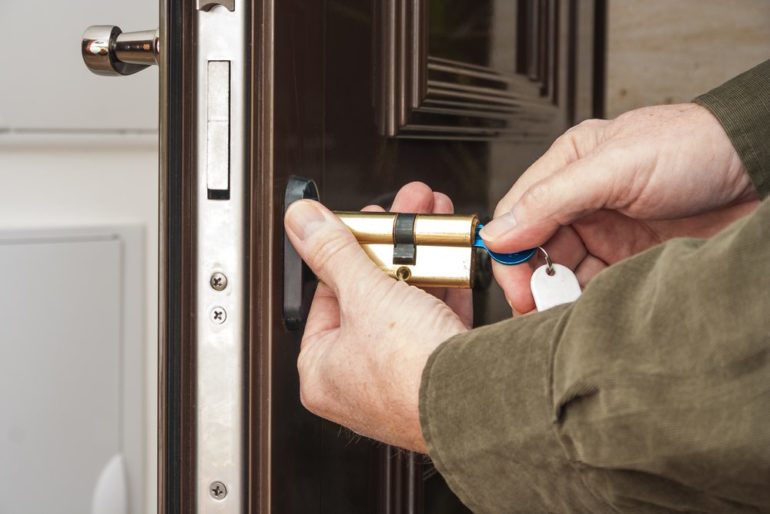Kitchener Locksmiths History
Kitchener Locksmith 226-243-7803
Kitchener Locksmiths History
When most of us think of the locksmith it will conjure images of a man with gigantic key ring full of keys trying to open a heavy old door leading to hidden or forgotten treasures. Being a locksmith, like being a blacksmith or carpenter, is a traditional labour job that has a long history. In fact the history of the locksmith is closely linked to that of the blacksmith and can be traced back to long before the middle ages with early locks consisting of a wooden wedge skewered between a door and its frame existing in biblical times. Like many innovations however, the earliest known ‘lock and key’ system was found in Ancient Egypt and consisted of two crossbars mountain on two separate surfaces that were locked into place by small movable pins and utilised a keyhole to disable. By inserting the key tiny pins would be pushed out of the way back inside the crossbars to allow them to be moved, which is largely how locks today work.
It was not really until the Middle Ages however that locks requiring keys caught on in the West.
Initially forging locks and keys was the job of the blacksmith who would shape the metal in much the same way they would forge a horseshoe or weapon. As crime rates increased this increased the need for locks and for more complex locking mechanisms (though at this time only the keys were metal and the locks themselves were wooden meaning they fell under the jurisdiction of the carpenter). This huge demand created an industry, leading to the rise of locksmith guilds around the 14th century which eventually overtook the trade and lay down regulations regarding pricing, design and quality. In order to rise through the ranks and become a ‘master locksmith’, an individual had to impress the authorities with their innovations which would then be put on display in the guild hall.
In the 1930s these locks became more complex which made it more difficult for burglars and other to pick them and the first metal locks were introduced.
This again correlated with a further increase in incidences of theft and crime, as well as with new advancements and lower prices following the industrial revolution. Locksmiths were now a highly valuable part of any community whose jobs consisted of both forging locks and keys as well as opening locks that others had left. During World War 2 locksmiths like most trades suffered with many locksmiths being drafted into the army and with supplies being harder to come by.
Today however new techniques have lead to the widespread use of a variety of locks which now come as standard in almost any building or installation.
Locks are now found on external and internal doors, windows, vehicles, vaults and safes and locksmiths have expanded their expertise to cope with this demand providing key cutting and copying, installation, design and production. This gives us; the general public, a varied selection of purpose built locks to suit our every need.

Recent Comments